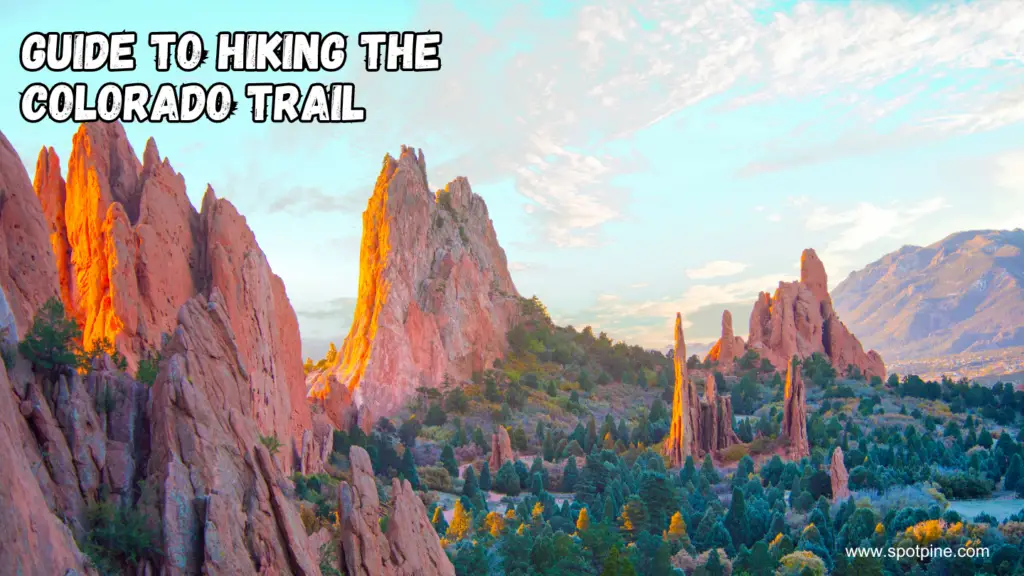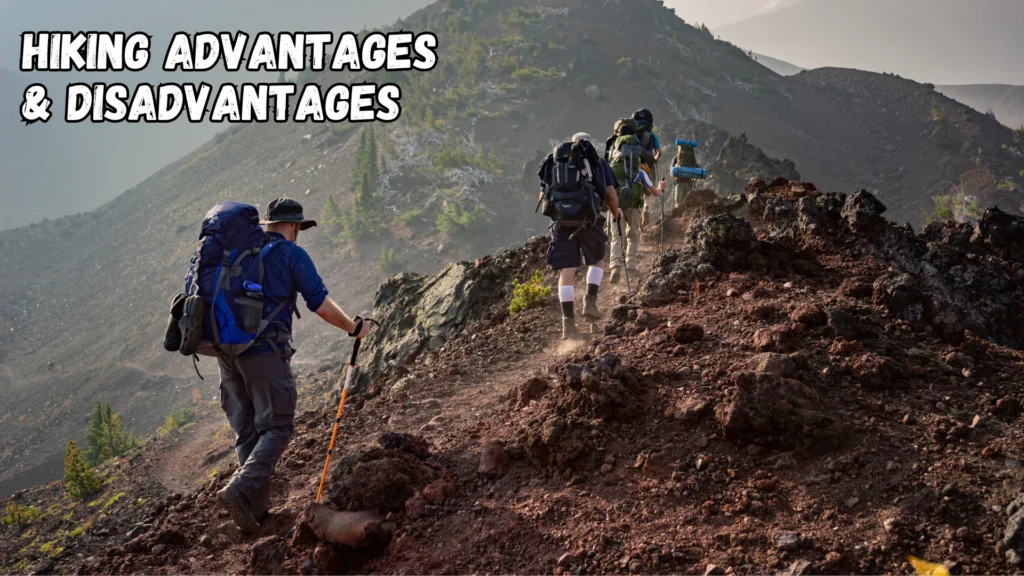Hiking the Colorado Trail offers breathtaking views and challenging terrain for outdoor enthusiasts. It spans over 486 miles from Denver to Durango, with diverse landscapes and altitudes up to 13,334 feet.
The trail is divided into 28 segments, providing an array of hiking experiences, from alpine scenery to forests and meadows. Hikers can also encounter diverse wildlife and immerse themselves in the region’s rich history. With proper planning and preparation, the Colorado Trail offers a rewarding journey for those seeking adventure in the great outdoors.
An Adventurous Journey
What Is The Colorado Trail?
The Colorado Trail is a stunning long-distance hiking trail spanning over 486 miles through the Colorado Rocky Mountains.
Why Hike The Colorado Trail?
Embark on the Colorado Trail to experience breathtaking landscapes, diverse ecosystems, and challenging terrains.
Preparation For The Colorado Trail
Exploring the breathtaking landscapes of the Colorado Trail requires thorough preparation.
Researching The Trail
Begin by researching the different segments and terrain of the Colorado Trail.
Planning Your Itinerary
Create a detailed itinerary based on your pace, mileage, and available time.
Gathering Necessary Gear
Assemble essential gear such as a lightweight tent, durable hiking boots, and a high-quality water filter.
Physical Fitness
Prioritize conditioning through regular hikes and strength training exercises.
Navigating The Colorado Trail
If you’re planning a hiking adventure on the Colorado Trail, it’s crucial to have a good understanding of how to navigate your way along the trail. Hiking the Colorado Trail comes with its own set of challenges, and being prepared and knowledgeable will make your journey safer and more enjoyable. In this guide, we’ll explore the key aspects of navigating the Colorado Trail, from understanding the trail markings to managing stream crossings and dealing with wildlife encounters.
Understanding The Trail Markings
Before setting out on the Colorado Trail, familiarize yourself with the trail markings. These markings will guide you along the path and help you stay on track. Here are some important trail markings to remember:
- CT Marker: Look out for the official Colorado Trail (CT) markers painted on trees and rocks. These rectangular-shaped marks feature a symbol of the trail’s logo, making them easily recognizable.
- Mileage Markers: Along the trail, you’ll come across mileage markers indicating the distance you’ve covered and the remaining distance to the next waypoint. Pay attention to these markers to stay on schedule and estimate how far you have left to hike.
- Intersection Signs: At trail intersections, you’ll find signs that indicate which way the Colorado Trail continues. Take your time to read these signs carefully and make sure you are headed in the right direction.

Following The Route
Staying on the right path is essential when hiking the Colorado Trail, especially in areas where multiple trails intersect. Here are some tips for following the correct route:
- Map and Guidebooks: Carry a detailed map and guidebook of the Colorado Trail to help you navigate the route. These resources will provide valuable information and ensure you stay on track.
- GPS and Navigation Apps: Utilize GPS devices or navigation apps on your smartphone to track your progress and ensure you don’t veer off course. These tools can be a lifesaver, especially in remote areas without clear trail markings.
- Pay Attention to Landmarks: Keep an eye out for prominent landmarks mentioned in guidebooks or mentioned by fellow hikers. These landmarks can serve as reference points to confirm you’re on the right path.
Managing Stream Crossings
Throughout the Colorado Trail, you’re bound to encounter numerous streams and river crossings. Follow these practices to safely navigate these water obstacles:
- Scout Ahead: Before attempting a stream crossing, take the time to scout the area upstream and downstream for the safest crossing point.
- Remove Your Boots: For deeper or swift-flowing water, it’s advisable to remove your boots, secure them to your pack, and wade across wearing water shoes or sandals.
- Use Trekking Poles: Utilize trekking poles to provide stability and support when crossing streams with uneven or slippery rocks. These poles can help prevent slipping and reduce the risk of injury.
- Assess Water Flow: Evaluate the strength and speed of the water flow before crossing. If the current seems too strong or unsafe, it’s better to find an alternative route or wait until the water level decreases.
Dealing With Wildlife Encounters
While hiking the Colorado Trail, you may come across various wildlife species, including bears, mountain lions, and rattlesnakes. Here’s how to handle wildlife encounters appropriately:
- Stay Calm and Make Noise: If you encounter wildlife, remain calm, and make your presence known by speaking loudly or clapping your hands. Most animals will prefer to avoid human contact.
- Giving Wildlife Space: Keep a safe distance from wild animals and never approach or attempt to feed them. Respect their natural habitat and observe them quietly from a distance.
- Secure Food and Smelly Items: Store food, trash, and other scented items securely in bear-proof containers or bear bags. Properly disposing of these items will prevent attracting wildlife to your campsite.
- Know How to React: Research the appropriate response to encounters with specific animals before your hike. Understanding their behaviors and how to react will help you stay safe.
Credit: coloradotrail.org
Tips For A Successful Hike
Embarking on the Colorado Trail is an exhilarating adventure, but making sure you have the right preparations and equipment is essential for a successful hike. Consider these tips to ensure you have a safe, enjoyable journey.
Pack Light, Pack Right
The key to a successful hike is to pack light, but also pack right. Remember to bring only essential items such as a lightweight tent, sleeping bag, portable stove, and compact cooking utensils. Packing a multipurpose tool can also come in handy.
Water And Food Management
Stay hydrated and fuel your body with nutrient-dense food by planning your water and food supply strategically. Make sure to carry a water filter or purification tablets. Additionally, pack lightweight, high-energy snacks and dehydrated meals to keep your pack weight down.
Proper Hygiene And Waste Disposal
- Maintaining proper hygiene is essential on the trail. Bring biodegradable soap and a small towel for cleaning up after a long day of hiking. Don’t forget to pack out all waste to leave no trace behind.
Weather Preparedness
Colorado’s weather can change rapidly, so be prepared for all conditions. Pack lightweight layers, a waterproof jacket, and a hat to shield you from the sun. Don’t forget a reliable map or GPS device in case of unexpected weather changes.
Safety Considerations
- Always inform someone of your hiking plans and anticipated return time.
- Carry a first aid kit and know basic wilderness first aid skills.
- Be aware of wildlife in the area and know how to properly store food to avoid encounters.
Highlights Of The Colorado Trail
The Colorado Trail offers breathtaking views of the Rocky Mountains, spanning 486 miles from Denver to Durango. Hikers can admire diverse landscapes, from alpine tundra to lush forests, and encounter diverse wildlife while enjoying a well-maintained trail. Experienced and novice hikers alike can find the perfect section to explore.
Scenic Views And Landscapes
The Colorado Trail offers hikers breathtaking scenic views and landscapes that are unrivaled. As you traverse the trail, you’ll be treated to an array of natural wonders that will leave you in awe. From the majestic snow-capped peaks of the Rocky Mountains to the serene alpine lakes nestled amidst lush forests, every step brings a picturesque vista. The trail takes you through diverse terrains, including open meadows, thick pine forests, and rugged canyons. With each new section, you’ll be greeted by a different and equally stunning landscape, ensuring a captivating hiking experience.
Wildlife Spotting Opportunities
The Colorado Trail is a haven for wildlife enthusiasts, offering wildlife spotting opportunities that are truly remarkable. As you make your way through the trail, keep your eyes peeled for a chance to encounter Colorado’s diverse fauna. From majestic elk and bighorn sheep to playful marmots and elusive mountain lions, the trail presents ample opportunities to observe these incredible creatures in their natural habitats. With luck, you might also spot soaring eagles, colorful hummingbirds, or even a family of curious foxes. These encounters with wildlife add an extra layer of excitement and wonder to your hiking adventure.
Historical Landmarks
In addition to its natural beauty, the Colorado Trail is also rich in historical landmarks that provide glimpses into the region’s past. Along the trail, you’ll come across remnants of old mining settlements, abandoned cabins, and ancient Native American rock art. These historical landmarks serve as reminders of the area’s fascinating history and offer hikers a deeper connection to the land they are exploring. Take a moment to appreciate the stories that these landmarks have witnessed and reflect on the people who once called this place home.
Challenges And Rewards
Hiking the Colorado Trail is not without its challenges and rewards. The trail spans over 500 miles, presenting hikers with various obstacles and difficulties. From steep ascents to rugged and rocky terrain, it demands physical stamina and mental resilience. However, the challenges are undoubtedly rewarded with a sense of accomplishment and the opportunity to immerse oneself in nature’s wonders. Each difficult mile conquered brings a renewed appreciation for the journey and a deeply satisfying feeling of overcoming obstacles. The Colorado Trail rewards hikers with an experience that pushes their limits while providing incredible moments of serenity and inner peace.

Connecting With Nature And Fellow Hikers
Connecting with nature and fellow hikers is an integral part of the Colorado Trail experience. As you embark on this breathtaking journey, you’ll have the opportunity to find solitude in the wilderness, build camaraderie with other hikers, and share stories and experiences that will create lasting memories.
Finding Solitude In The Wilderness
The Colorado Trail offers an unparalleled opportunity to immerse yourself in the beauty of nature and find solace in the wilderness. Whether you’re hiking through the towering pine forests or gazing at the majestic mountain peaks, the trail allows you to disconnect from the hustle and bustle of everyday life and reconnect with the peaceful serenity of the natural world.
Building Camaraderie On The Trail
One of the most rewarding aspects of hiking the Colorado Trail is the sense of camaraderie you’ll experience with fellow hikers. As you tackle the challenging terrain together, you’ll form bonds with like-minded adventurers who share your love for the great outdoors. This shared experience creates a unique and supportive community that enhances the overall journey.
Sharing Stories And Experiences
The trail provides an ideal setting for sharing stories and experiences with other hikers. Whether you’re swapping tips on navigating rugged terrain, recounting encounters with wildlife, or simply reliving the day’s adventures, these interactions create a rich tapestry of shared experiences that enrich your time on the trail and create lasting connections.
Hiking The Colorado Trail: Dos And Don’ts
Embarking on the Colorado Trail is an exciting adventure, but important to follow guidelines for a positive hiking experience.
Respecting The Environment
- Stay on designated trails to protect fragile ecosystems.
- Dispose of waste properly, including using biodegradable products.
- Avoid disturbing wildlife by maintaining a safe distance.
Being A Responsible Backpacker
- Pack out all trash to leave no trace of your visit.
- Respect fellow hikers by keeping noise levels to a minimum.
- Be prepared with adequate supplies and knowledge of the trail.
Being Mindful Of Local Regulations
| Regulation | Guidelines |
| Campsite restrictions | Abide by designated camping areas and adhere to fire regulations. |
| Permit requirements | Obtain necessary permits and follow registration procedures. |
| Protected areas | Respect boundaries of protected areas and avoid restricted zones. |
Post-hike Reflection And Lessons Learned
Embark on the awe-inspiring Colorado Trail with this concise hiking guide. Learn from post-hike reflection and valuable lessons gained from traversing this scenic trail.
Celebrating The Accomplishment
After completing the challenging journey on the Colorado Trail, it’s essential to take a moment for self-celebration. Acknowledge the hard work and dedication that led you to this significant accomplishment.
Taking Time For Self-reflection
Reflecting on the experience allows you to appreciate the lessons learned and embrace personal growth. Spend time pondering the challenges faced and the triumphs achieved during the hike.
Applying Lessons Learned To Future Adventures
Utilize the insights gained from the Colorado Trail hike to enhance future outdoor excursions. Implement strategies that worked well and learn from any mistakes made to have more successful adventures ahead.
Credit: www.amazon.com
Conclusion
Hiking the Colorado Trail is an exhilarating adventure that immerses you in the scenic beauty of the Rocky Mountains. With stunning landscapes, diverse wildlife, and challenging terrain, this trail offers a unique experience for outdoor enthusiasts. From crucial tips on gear and navigation to the incredible sense of accomplishment, conquering this trail is a must for any avid hiker.
So, lace up your boots, embrace the challenges, and embark on a journey of a lifetime on the Colorado Trail.



